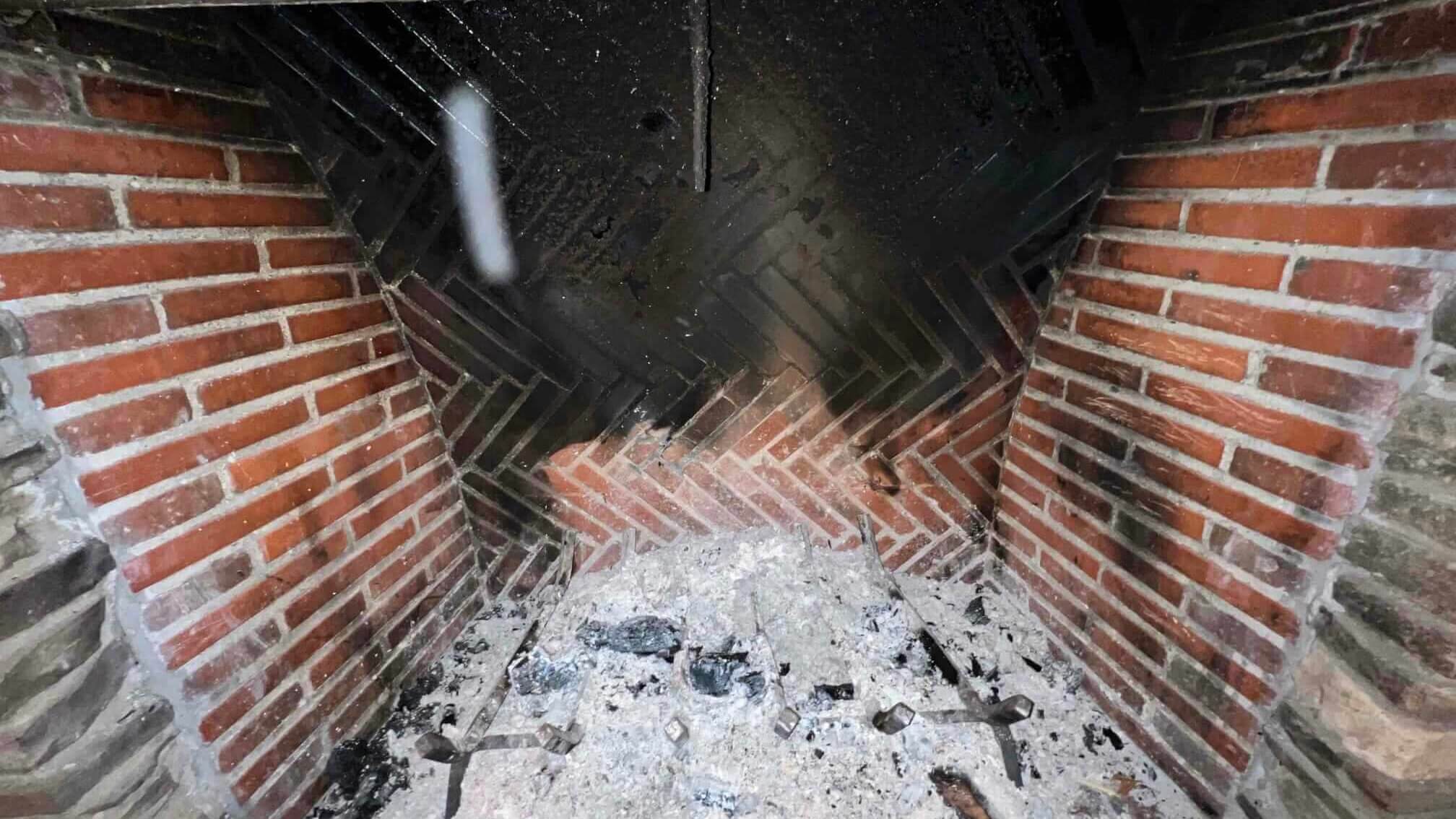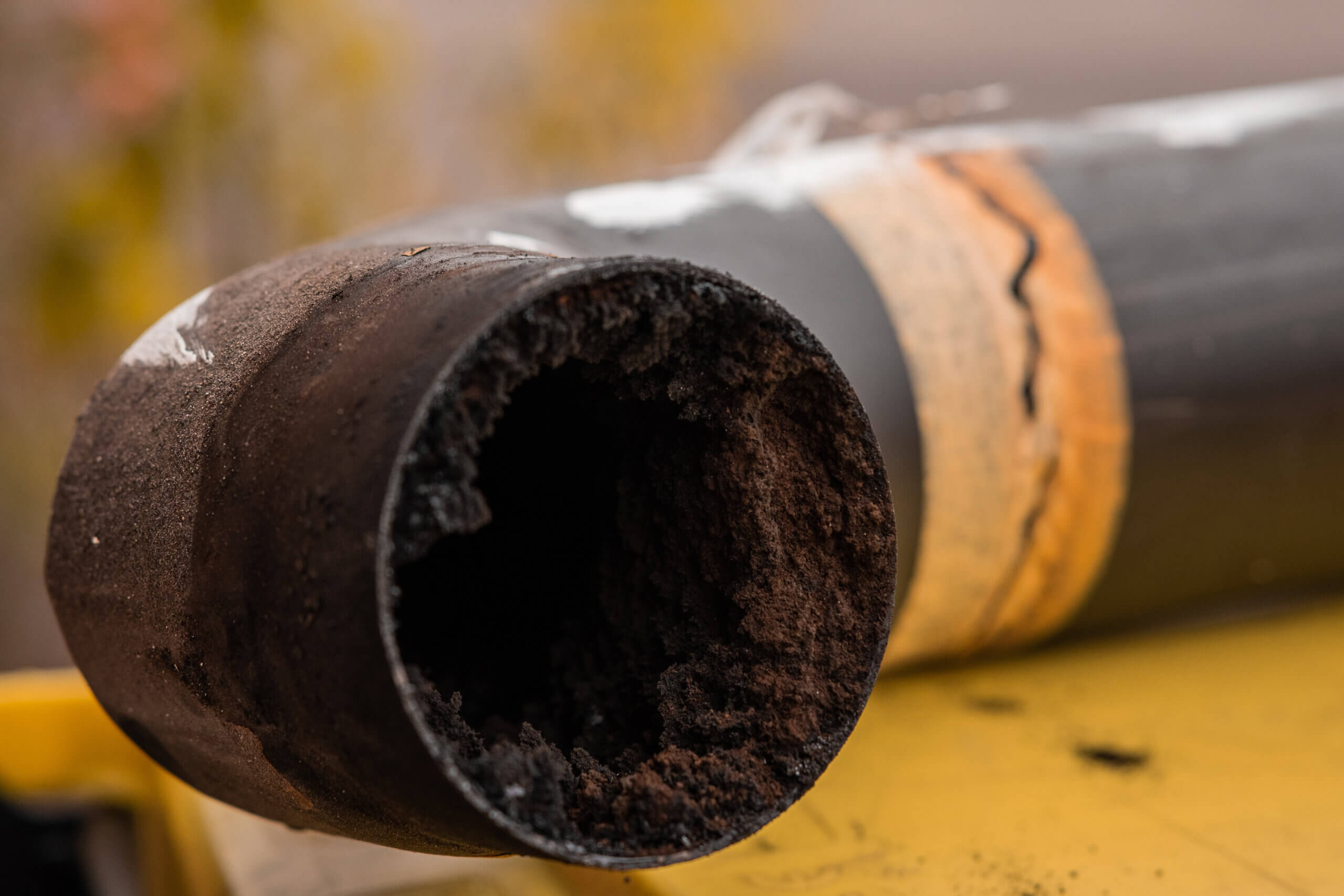What is Creosote?
Creosote is a byproduct of burning wood. It is a dark, oily substance that can accumulate in your chimney lining. There are three stages of creosote buildup, ranging from a flaky soot that is easy to clean, to a tar-like coating that is much more challenging to remove. Understanding what creosote is, why it builds up, the risks it poses, and how to prevent it is crucial for maintaining a safe and efficient fireplace.
Causes of Creosote in Chimney
Incomplete Combustion: When wood does not burn completely, it produces more smoke and thus, more creosote. This can be due to using unseasoned wood or a poorly designed fireplace.
Cool Chimney Temperatures: A cooler than normal chimney can cause the unburned wood particles and gases to condense and form creosote.
Burning Practices: Frequent, low-heat fires contribute to creosote buildup more than occasional, high-heat fires.

Risks Associated with Creosote
Creosote buildup in chimneys poses several risks that homeowners should be aware of. The primary danger is the potential for chimney fires; as creosote accumulates into thick layers, it becomes highly combustible and can easily ignite, leading to a hazardous and possibly catastrophic blaze. In addition to the fire risk, creosote presents several health hazards. Prolonged exposure to creosote can result in respiratory problems and can irritate the skin. Moreover, as creosote gathers, it can constrict the chimney flue, impeding airflow and significantly diminishing the efficiency of your fireplace. It’s crucial to monitor and manage creosote to prevent these risks.
Prevention Tips
- Burn Seasoned Wood: Always use well-seasoned wood, which burns hotter and cleaner.
- Maintain Proper Airflow: Ensure your fireplace receives enough air to facilitate complete combustion.
- Regular Cleaning and Inspection: Have your chimney inspected and cleaned by a professional at least once a year.
- Avoid Slow-Burning Fires: Aim for hotter, shorter fires rather than low and slow burns.
Creosote buildup in chimneys is a serious issue, but with the right knowledge and practices, it can be managed effectively. Regular maintenance, proper burning practices, and awareness of the causes and risks are key to keeping your home safe and your fireplace running efficiently. Remember, when it comes to chimney safety, prevention is always better than cure.
FAQ: Understanding Creosote in Your Chimney
What makes creosote dangerous?
Creosote becomes dangerous due to its high flammability; when it builds up in thick layers inside a chimney, it can ignite and cause a chimney fire. Additionally, creosote can pose health risks through prolonged exposure, leading to respiratory issues and skin irritation.
Is creosote toxic when burned?
Yes, burning creosote can release toxic chemicals. These fumes can be harmful if inhaled, making it crucial to avoid any situation where creosote might be burned inside the chimney.
Does burning a hot fire remove creosote?
While a hot fire may reduce the amount of creosote deposited by burning off some of the volatiles, it does not remove existing buildup and could potentially ignite it. Proper chimney cleaning is necessary to safely remove creosote.
What will break down creosote?
Chemical creosote removers can break down the substance, making it easier to remove during chimney sweeping. These removers often change the creosote into a less adherent form, but professional cleaning is recommended for safety and thoroughness.What are the 3 Levels of Creosote? Creosote can be classified into three stages:
Level 1 is a flaky soot that can be easily brushed away.
Level 2 is a crunchy, tar-like coating that requires more effort to remove.
Level 3 is the most dangerous, resembling a thick, tarry glaze that is highly combustible and difficult to remove, often requiring professional intervention.
